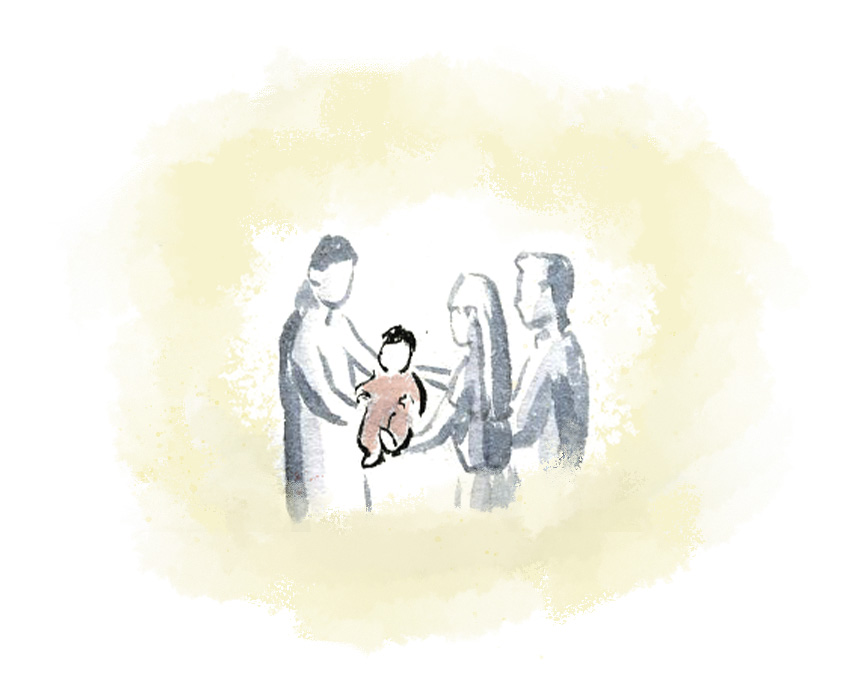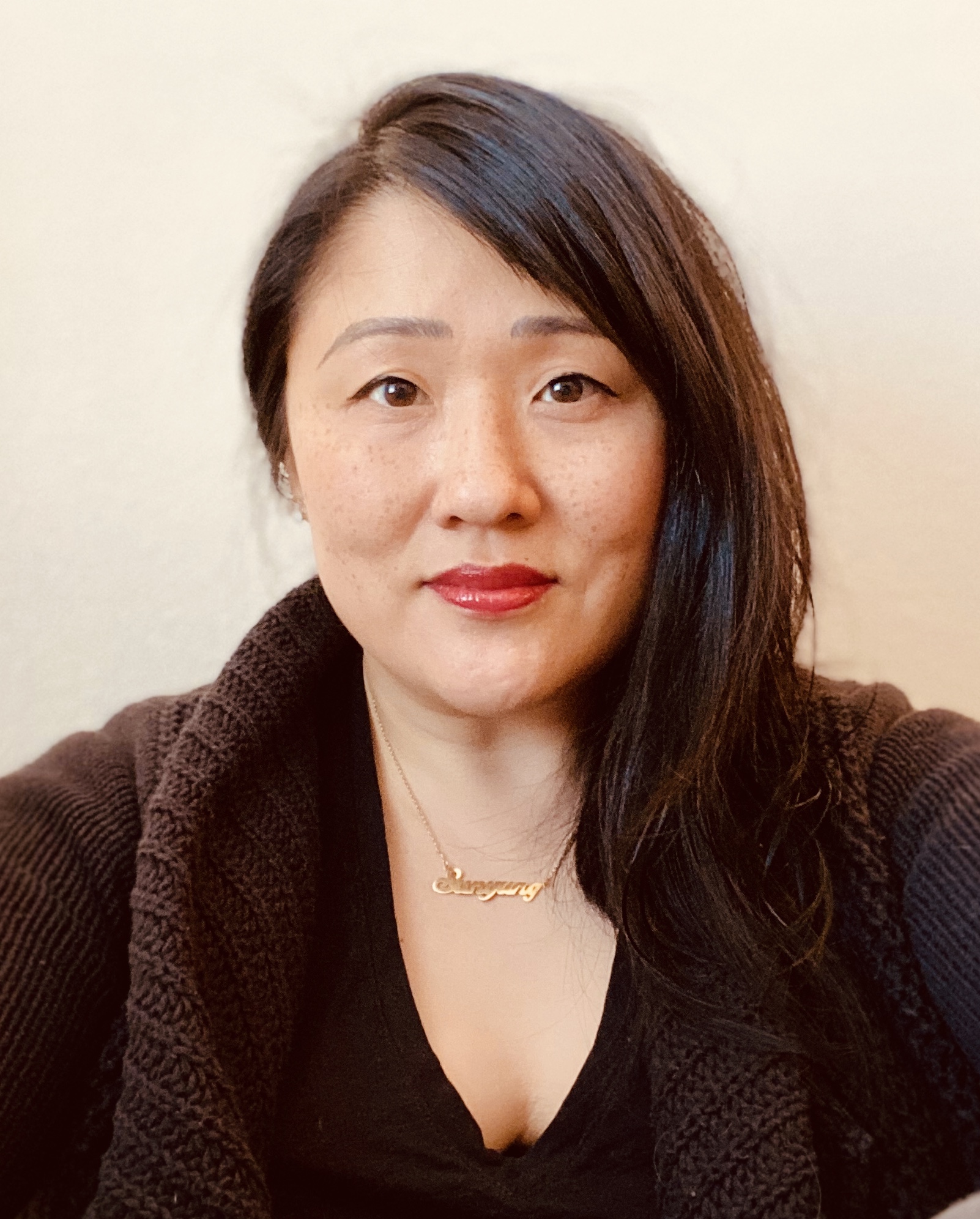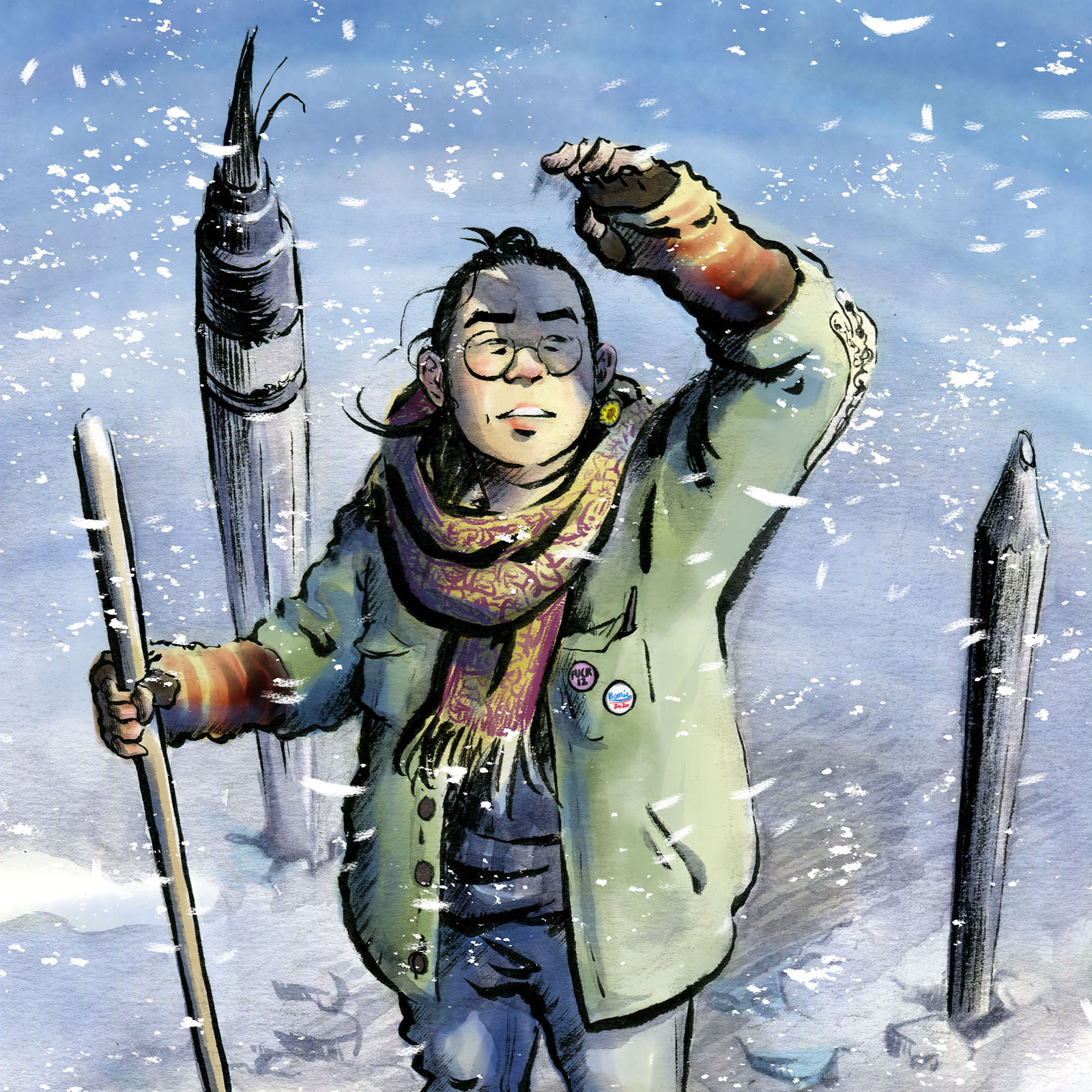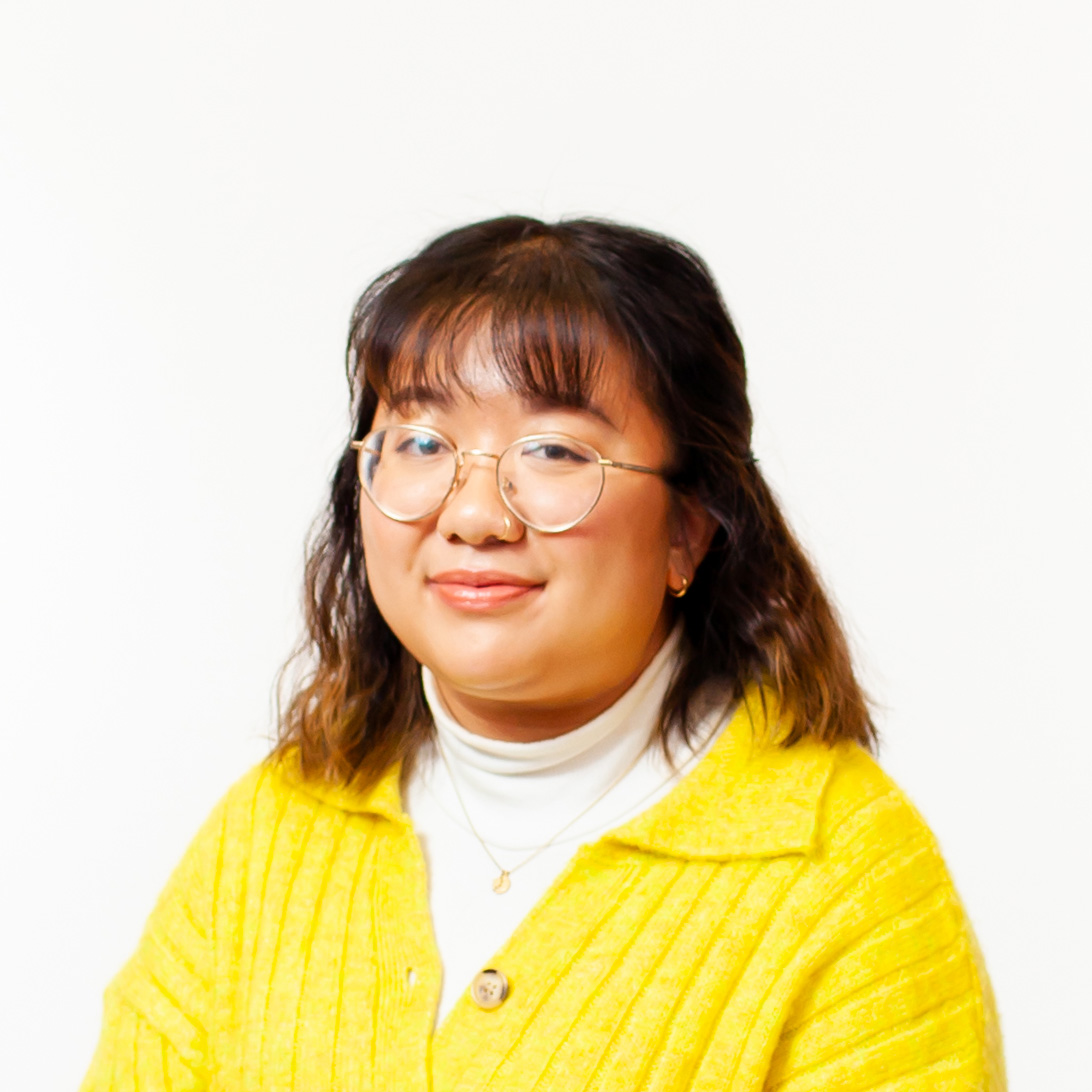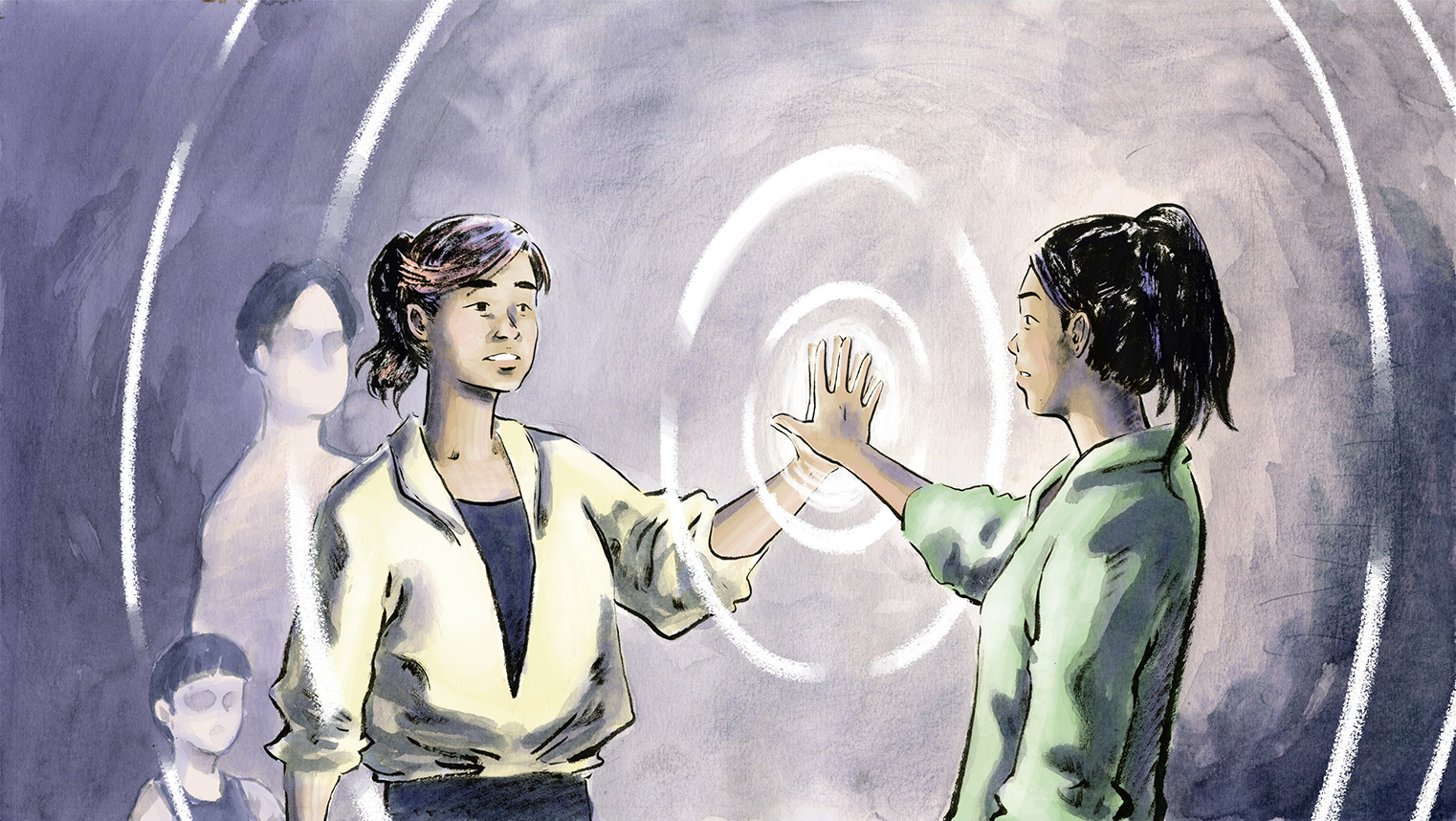
A Story of Wholeness —
Part Two: What is Gained
Story by Sun Yung Shin / Illustration by sunshine gao
Part II of a two-part series
When Korean adoptee Callie Chamberlain was 18, she opened up her file with the Korean agency connected to her adoption and started to look for her birth family—an emotionally intense process, to say the least. This was to be the beginning of a process of gaining knowledge, recovering birth family relationships, and forging new possibilities for her own wholeness as a Korean American.
At first things didn’t look promising.
Her agency made two attempts at outreach without success—Korean adoptees are only allowed three. But then the agency came back with new information, reporting that Callie was the result of an affair her mother had. “It’s probably going to be really hard for your birth mom,” they told Callie. “Wait a couple years before trying to contact her.”
Callie waited, but to her it felt more like giving up and trying to move on.
“The story my parents had received about my birth mother—that she was young and couldn’t care for me—was the only connection I had to my past,” Callie says.
“I was learning that was not just inaccurate but intentionally inaccurate to move my adoption through. It’s a story given to almost all adoptees as it’s easier to explain than some of the more honest reasons: poverty, gender discrimination, violence, rape, war.”
Then in 2020, a psychic told Callie that she was going to reunite with her birth family.
This provided a nudge to try one more time.

Callie asked the agency to make their third and final approach, though they were doubtful this outreach would succeed. But it did.
And at the same time,
a new challenge emerged.
The agency was able to make contact with Callie’s birth mother, but in order to confirm that they were indeed mother and daughter, their DNA would have to be compared and proven to be a match. Upon consideration, Callie declined.
“I wanted to protect my birth mother. Because she was with the person she was married to when I had located her, and the paperwork I’d been given said that she’d had an affair,” she says. “I didn’t want to blow up her life, and most importantly, I didn’t want to put her at risk. If she had an affair and a DNA test exposed that, it could put her in physical danger.”
With her father’s identity a mystery to her, and despite the challenges and risks of traveling during the pandemic, Callie filed for a COVID travel exemption and was preparing to fly to South Korea to (re)meet her mother. Then a new surge in cases from the omicron variant forced her to abandon that plan.

But amid that wave of disappointment, a surprising piece of information came to light.
“The agency used my DNA against my consent and tested my mother’s husband, who actually is my father,” she says. “My birth parents had been married the whole time, and the Korean file was not accurate.”
This is, it turns out, a shared experience for a lot of adoptees.
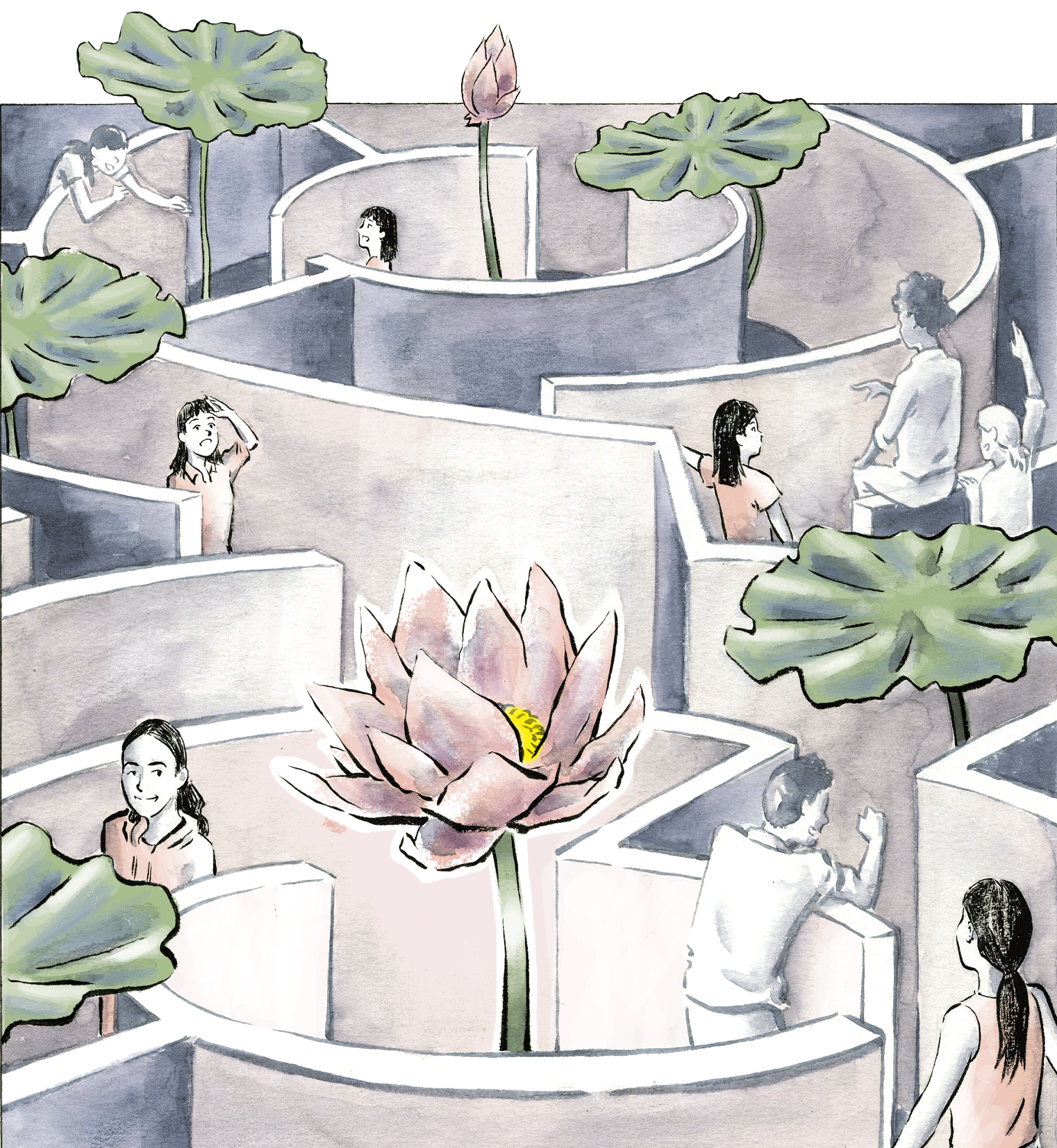
These fabrications, many of which are done to avoid making adoption seem undesirable to adopting parents, also have roots in history and culture.
In Korea, relinquishing a child for adoption because of poverty was seen as shameful, as was being a single mother. Adoptees’ existences after the fact were often kept secret, or simply not talked about.
The fictions sometimes told to adoptees result in further trauma when and if they are revealed.
Callie found not just her parents but also two full siblings. “Moving through that was really challenging,” she says. “I have an older sister. I have a younger brother that they kept.” Processing revelations like these can take a lifetime, as many adoptees have experienced, as integration is iterative and shifts as adoptees move through different life stages and changes.
Throughout the search and ongoing reunion journey, Callie has continued to come face-to-face with more layers of herself, what she needs, and what healing means to her.
“I’ve had to accept that my birth family couldn’t give me a greater sense of identity or belonging but a deeper context into who and where I come from,” she says. “Releasing the narratives I’ve held on to, confronting the tragedy of the adoption system that sees us as bodies and dollar signs unworthy of accurate record keeping and origin stories, having my DNA used against my consent, being lied to about my history, exposed family information—all of it brought me face-to face-with my own trauma.”
Callie, a birth doula, compares her process to getting people ready to deliver a child. “Just like you can’t fully prepare someone to labor through childbirth, you can’t ever fully prepare for this kind of journey. You just have to trust yourself to navigate it and surround yourself with community,” she says.
“This process required me to labor, to work, to cope, to submit, to release, to touch my own kind of death and be reborn, reconfiguring myself around everything coming to light.”
The alienation and pain of surviving relinquishment and adoption surfaced in ways that surprised Callie. She remembers looking at the first photo she had ever seen of her birth mother and how critical she, Callie, was of her mother’s appearance. This negative view created inner dissonance for Callie because her friends and family told her that she and her birth mother looked identical.
She embraced the discomfort and found some important truths within it.
“It was such a strange and overwhelming feeling,” she says. “I realized that this was just all my internalized hate projected onto somebody else.”
“I remember thinking, ‘I cannot believe I have never laid eyes on a single person who shares any of my physical similarities until now,’” Callie says. “I’m not around people who look like me. It was so foreign to me to look at someone so similar, I actually couldn’t see the similarities at all.”
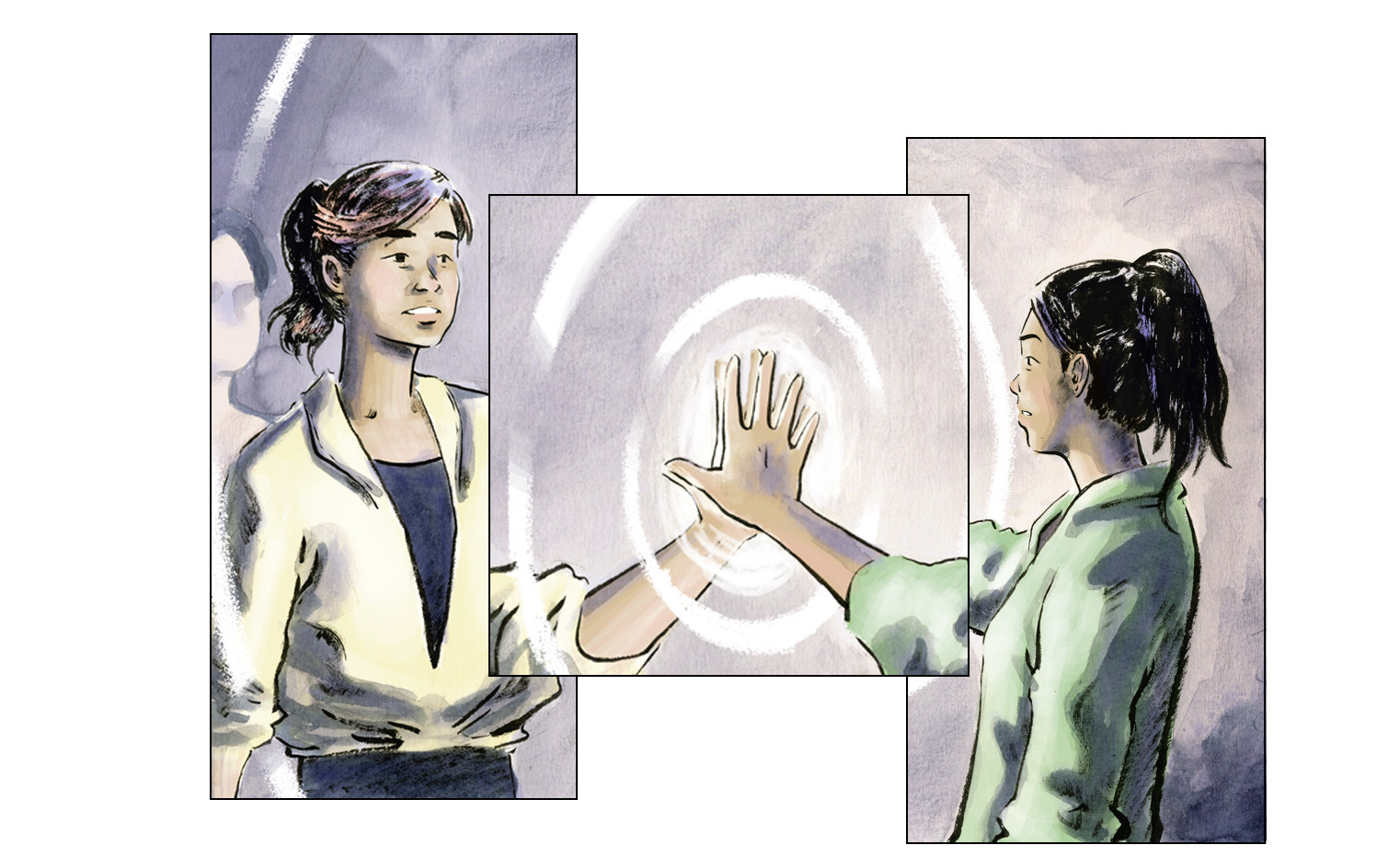
Inextricable from adoption is Callie’s evolving relationship with her Asian American identity.
“I would say that over the last couple years I’ve really started to come out of the fog, if you will,” she says. Now, she’s finding new ways to connect to her story, her country, her grief, and her Korean lineage.
“That’s also mine,” she says, “even though I didn’t grow up in Korea.”

One of the ways Callie is connecting with that authenticity is on behalf of undocumented transnational adoptees. Through her friend Patrick Armstrong, also a Korean adoptee, she has been working with the activist group Adoptees for Justice on calls to action regarding legislative issues impacting these disenfranchised adoptees.
Prior to 2000, when Korean adoptees such as Callie arrived in the United States, it was their adoptive parents’ responsibility to secure their U.S. citizenship.
However, many adoptive parents neglected this essential duty, leaving thousands of Korean American adoptees undocumented and vulnerable to deportation to South Korea.
In 2000, Congress passed the Child Citizenship Act of 2000 (CCA) which granted “automatic citizenship to all foreign-born children brought to the United States under the age of 18 and have at least one parent who is a U.S. Citizen. It applied to all future adoptees as well as those under the age of 18 who were adopted prior to the CCA’s effective date.”
Unfortunately, the CCA did not cover intercountry adoptees in the U.S. who turned 18 before its effective date, but new legislation might hold the answer. The Adoptee Citizenship Act of 2021, introduced by Representatives Adam Smith (D-Wash.) and John Curtis (R-Utah), corrects this gap in the law by confirming international adoptees’ U.S. citizenship statuses, regardless of if they were over the age of 18 when the CCA took effect.
The Adoptee Citizenship Act passed in the House of Representatives on February 4, 2022 with a vote of 222-210. As of this writing, the bill is currently in conference committee between the House and Senate chambers as they try to come to an agreement on a finalized version. “Since the ACA passed through the House, we are trying to make sure it stays in,” Callie says.

While much has been lost for Callie and other Korean adoptees, in Callie’s case much has been gained. While nothing can make up for the loss of being raised in one’s own family, language, culture, and country of origin, Callie has developed supportive relationships within the adoptee community and continues to draw upon inner reserves of courage to live and work as an authentic, whole person. Separation and loss are part of every adoptee’s life, but they aren’t the whole story. As Korean adoptees and their allies create more pathways to knowledge—embodied and historical—the healing will continue.
“I hold two truths: I am extremely close with my family. I’m happy and healthy and grounded. I couldn’t have asked for a better life,” says Callie. “And, I will always passively wonder what my life could have looked like and grieve an ambiguous loss. It’s both. I get to have both.”
Callie offers this advice for those who want to get involved in adoptee citizenship advocacy: “The petition on change.org has email language that can be sent out directly to the 100+ congressional members that are sitting in the committee. Also, it’s important for constituents to write and call their members directly!”
Sun Yung offers for further reading—a very short, incomplete list of transnational Korean adoptee stories, in English, by adoptees:
- Seeds from a Silent Tree: An Anthology by Korean Adoptees edited by Jo Rankin (1997) — Essays/memoirs
- Dust of the Streets: The Journey of a Biracial Orphan of the Korean War by Thomas Park Clement (1998, second edition 2012) —Memoir
- Voices from Another Place: A Collection of Works from a Generation Born in Korea and Adopted to Other Countries edited by Susan Soon-Keum Cox (1999) — Essays/memoirs
- A Single Square Picture: A Korean Adoptee’s Search for Her Roots by Katy Robinson (2002) — Memoir
- The Language of Blood and Fugitive Visions: An Adoptee’s Return to Korea by Jane Jeong Trenka (2005, 2009) — Memoirs
- Outsiders Within: Writing on Transracial Adoption edited by Jane Jeong Trenka, Julia Chinyere Oparah, and Sun Yung Shin (2006, second edition 2021) — Edited by adoptees, contains essays/memoirs by adoptees and scholarly work by adoptees and non-adoptees
- Invisible Asians: Korean American Adoptees, Asian American Experiences, and Racial Exceptionalism by Kim Park Nelson (2016) — A scholarly work by an adoptee including oral histories taken from Korean adoptees
- Palimpsest: Documents From a Korean Adoption by Lisa Wool-Rim Sjöblom (2019) — Graphic novel-style memoir
- Older Sister. Not Necessarily Related by Jenny Heijun Wills (2019) —Memoir
While there are many documentaries about adoptees, two Korean adoptee filmmakers stand out for me: Deann Borshay-Liem and her films First Person Plural (2000), In the Matter of Cha Jung Hee (2010), and Geographies of Kinship: The Korean Adoption Story (2019) and Tammy Chu Tolle and her films Searching for Go-hyang (2000) and Resilience (2009).

contributors
